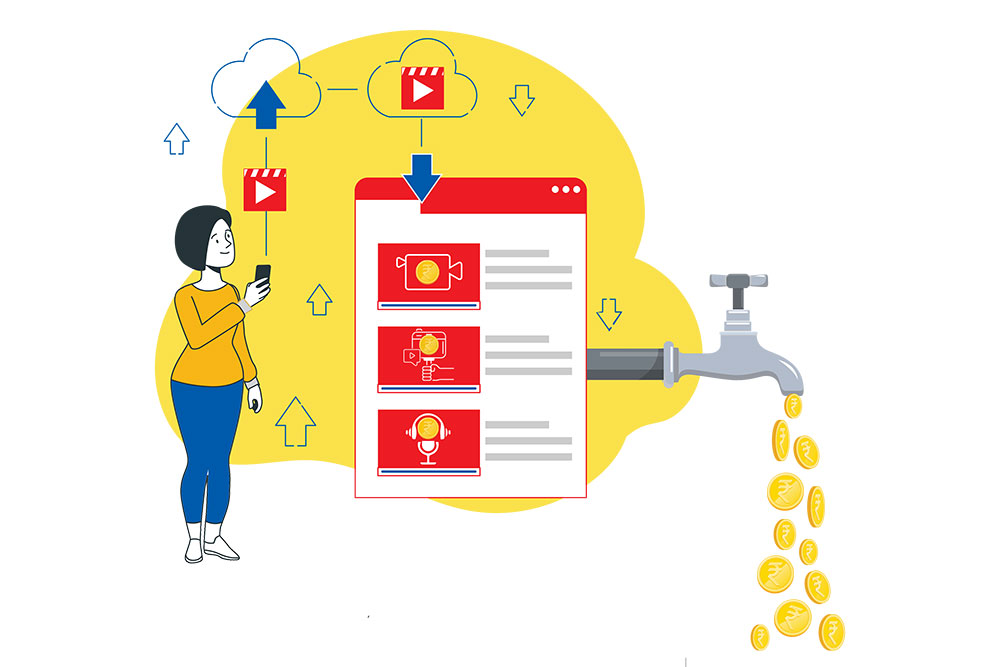It’s not uncommon to come across individuals aspiring to make YouTube videos and earn a living through them. On the face of it, that may sound simple, but it needs single-minded focus and a lot of effort before it becomes lucrative for you
Have a query? YouTube it and it’s likely you will get an answer, whether it’s about the right way to marinate chicken, a do-it-yourself (DIY) art project, or yoga for shoulder pain. From educational videos to spiritual content to historical facts to funny cat shorts, you can find just about anything on YouTube. Behind all the information are hundreds and thousands of YouTubers, some of whom create content regularly.
According to Statista, a data gathering and visualisation platform, online video is a popular digital activity, and 27 per cent of Internet users across the world watched over 17 hours of videos every week in 2023.
More and more people are now consuming information primarily through videos. As a result, platforms such as YouTube today are not just about entertainment or information and putting yourself out there, but are also being considered as a source of income by the young and the old alike.
The question then is whether it is as easy to earn money from YouTube as it sounds? We spoke to some YouTubers to understand how this works and whether one can rely on it for regular income.
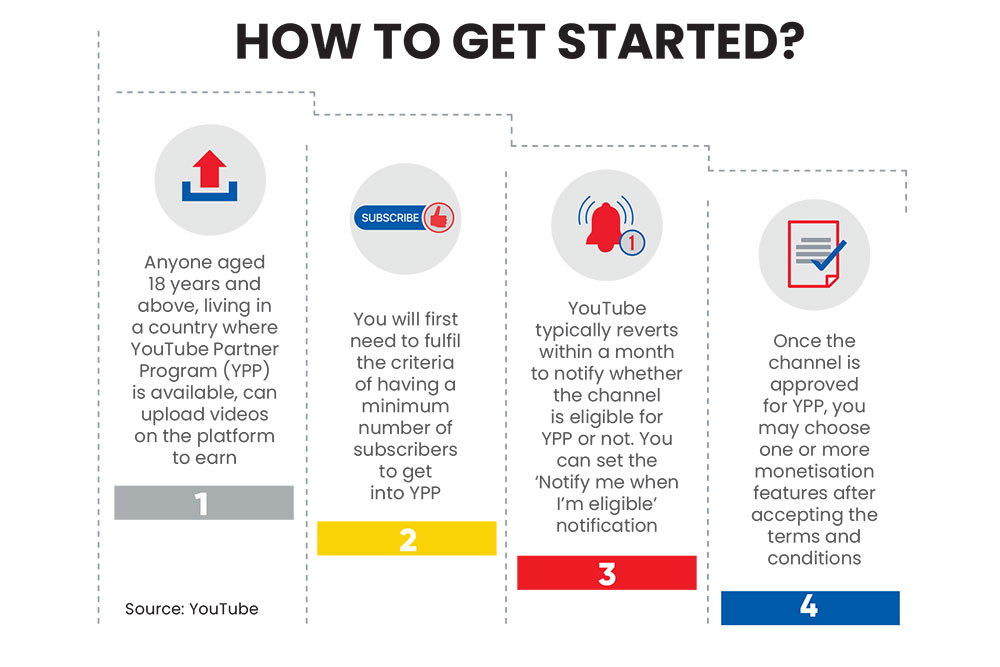
How Does It Work?
If you plan to monetise your YouTube channel, you will have to register for the YouTube Partner Program (YPP) (see How To Get Started?) and choose a monetisation programme (see How Does Monetisation Work?). This will largely depend on the number of subscribers you have. The earning percentage is based on the monetisation module one selects (see How Much Does It Pay?).
Ishan John Chatterjee, director-India, YouTube, says, “YouTube is uniquely poised to support innovation, with ways to make money across all these different formats. Our goal is to enable and reward creativity no matter what it looks like.”
He adds: “We launched the Partner Program in India in 2008. That meant that creators could, for the first time, share in the revenue and earn money from their content. Our revenue sharing model for ads has always been tied to creator success: YouTube only succeeds when our creators do.”
YouTubers, who are new to the process, usually earn from the Fan Funding feature. One such YouTuber is Mandeep Singh Kharb, a BITS Pilani alumni who restarted his YouTube channel DataScienceDiaries in 2021. The channel, which offers educational content on artificial intelligence (AI) and machine learning, has around 1,500 subscribers and the few thousands that he earns from the platform mostly come from the Fan Funding feature.
On the other hand, Ratheesh R. Menon, a freelance web designer, vlogger, and cyber technology enthusiast, who has been running his YouTube channel RatheeshrmenonOfficial since 2012, and has garnered around 1.11 million subscribers, earns from three sources.
“My earnings come from YouTube Ad Revenue, Sponsored Advertisements, and Affiliate Marketing commissions,” he says.
While YouTube Ad Revenue comes from the platform, the other two come directly from third parties. Menon explains that sponsored advertisement is negotiated directly with brands, and the revenue from affiliate marketing is generated when someone buys a product from, say, an e-commerce website (the link is embedded in the YouTube video). The YouTuber will have to embed the affiliate link of the product from the ecommerce platform’s website in the product description below his/her own YouTube video. If users click on that link, the YouTuber will get 2-5 per cent commission from the platform.
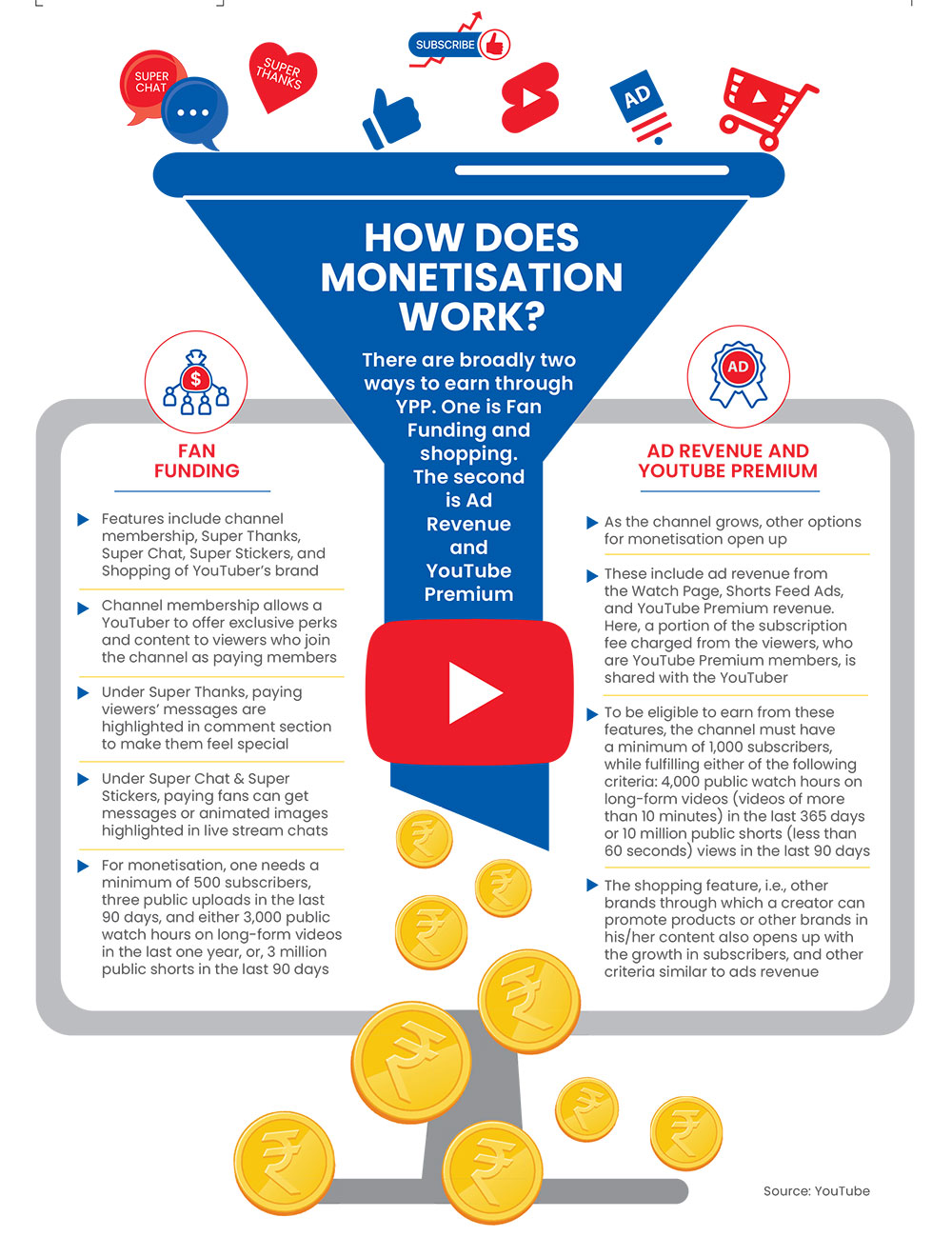
What You Need
A major factor that attracts people to start a YouTube channel is that there’s no mandatory cost to start one. For instance, popular YouTuber Dhruv Rathee, who creates educational videos and loves breaking down complex issues on his channel, dhruvrathee, started with the basic resources he had in his college—an iPhone, a laptop, and a free video editing tool. Now his channel has 14.1 million subscribers. Similarly, Menon started his YouTube channel with just a mic worth Rs 150, a Windows laptop, and two LED lights worth Rs 200 to record and upload videos.
But the amount of time you spend and the consistency you have can make a lot of difference. Menon agrees. “I’ve spent 10 times as much time on YouTube as I spend with my family. To make a video, first, we have to find content, then we have to learn about it, shoot it, edit it, and publish it, which takes a lot of time. As my channel evolved and uploading a video every day became impossible, we downsized to publishing 2-3 videos per week.” For aspiring creators, he suggests, “Consistent upload schedules, for instance, like every Monday and Friday at 5pm, can help increase user engagement.”
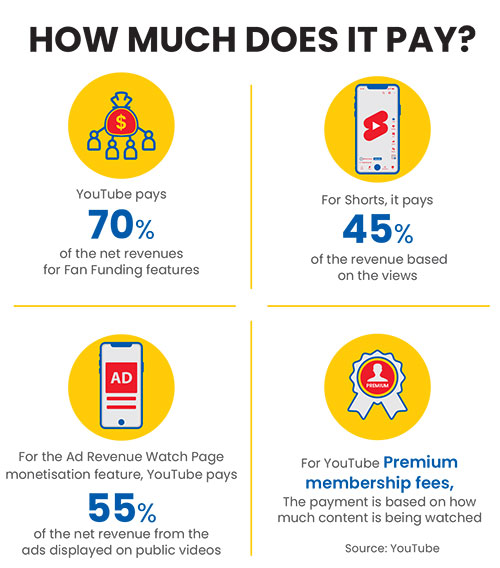
Rathee says the audience would love to have twice as many videos as he puts up. “But I, being an individual, have a personal limit on how much time I can dedicate to it. So, I think this (7-8 videos a month) is the maximum I am able to do as an individual because more than this is not physically possible for me.”
A strong connection with the audience also matters. “There have been a couple of times when my viewers asked me to create a video on a particular topic and how we can create a project on it? So, I created a complete project video showing them how to do it,” Kharb says.
Can YouTube Replace Your Regular Income?
Research data provided by YouTube, which it took from Oxford Economics, says that 76 per cent of creators who earn money from YouTube agree that the platform helps them export their content to international audiences they would not have access to otherwise, and 80 per cent of creators earning from YouTube agree that it provides them with an opportunity to earn money by creating content that would not be possible from traditional media. The data was released in 2022.
However, earning from the platform is not as easy as it seems.
Kharb first started his YouTube channel in 2018, but soon lost interest. When he revived his channel in 2021, it was with the intention of generating passive income. But it was two years later in 2023 that he started earning a few thousand from the platform every month. This income is, however, not even close to what he earns as regular salary from his Noida-based IT company. As such, he cannot think of running his YouTube channel as a full-time activity as of now. “I want to start an additional source of income by utilising my weekend time,” he says.
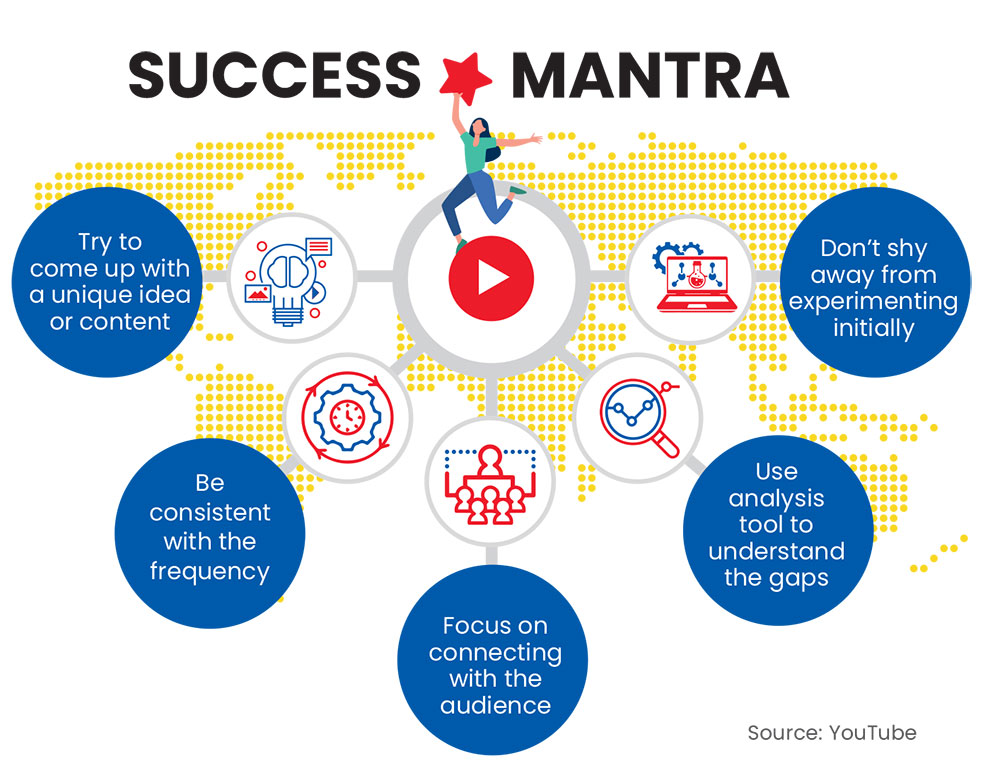
It also requires a lot of hard work. Along with his regular job, Kharb is only able to generate four videos a month, but he has been doing it regularly. He says it takes about four hours to create machine learning-based projects, shoot videos, edit and lastly upload them on YouTube.
Paucity of time can often be a spoiler. Nidhi Saini, a corporate trainer and an emotional clarity coach, started her channel nidhisaini2808 in 2020 to share communication tips. It has around 2,400 subscribers. However, she has not been able to monetise it yet. She thinks that’s because she is unable to spend enough time to produce adequate content due to her offline training commitments.
But devoting more time isn’t the complete solution; utilising YouTube to earn money demands a lot more.
Says Rathee, “The bar for earning money is very high. Those who have 1,000 subscribers and 4,000 watch hours will probably earn money. But how much is the question. There may be millions of people out there who may be barely earning something or maybe a little. But how many people are earning enough to consider it as their only job? That must be little.”
Sometimes, the income flow may take time to build up. For instance, Rathee didn’t start earning immediately. “It took me two-and-a-half years as I wasn’t consistent then and was just experimenting,” he says.
Menon says he received his first earning within a month of starting his channel in 2011 because the monetisation rules were not strict then. He rebranded the channel in 2014 and reached the 1 million subscriber mark only one-and-a-half years ago by adding variety in content. He decided to include some travel videos along with the tech videos he usually uploads on his channel.
He adds that tech creators with around 20,000 views per video earn an average monthly income of $500 from ads, whereas an entertainment channel with 1 million views can earn around Rs 2-3 lakh per month.
What Should You Do?
To start with, know how much time you can spend on your channel.
Says Rathee, “If you want a career in this field, you need to know how to manage yourself, because you have to decide how much you want to work. So, you need to set your boundaries and decide when you should be working and when you should stop working. The more videos you make, the more money you will earn. But the problem with this is that you never know when to stop, and you could burn yourself out in the process.”
Even though anybody can start a YouTube channel, making it your main breadwinning tool will need patience and time. There’s also the risk of not succeeding. So, it is better to keep a backup plan or a second source of income in case this does not work out or stops paying up after a certain point.
versha@outlookindia.com
With Inputs From Aaron Varghese Charly

